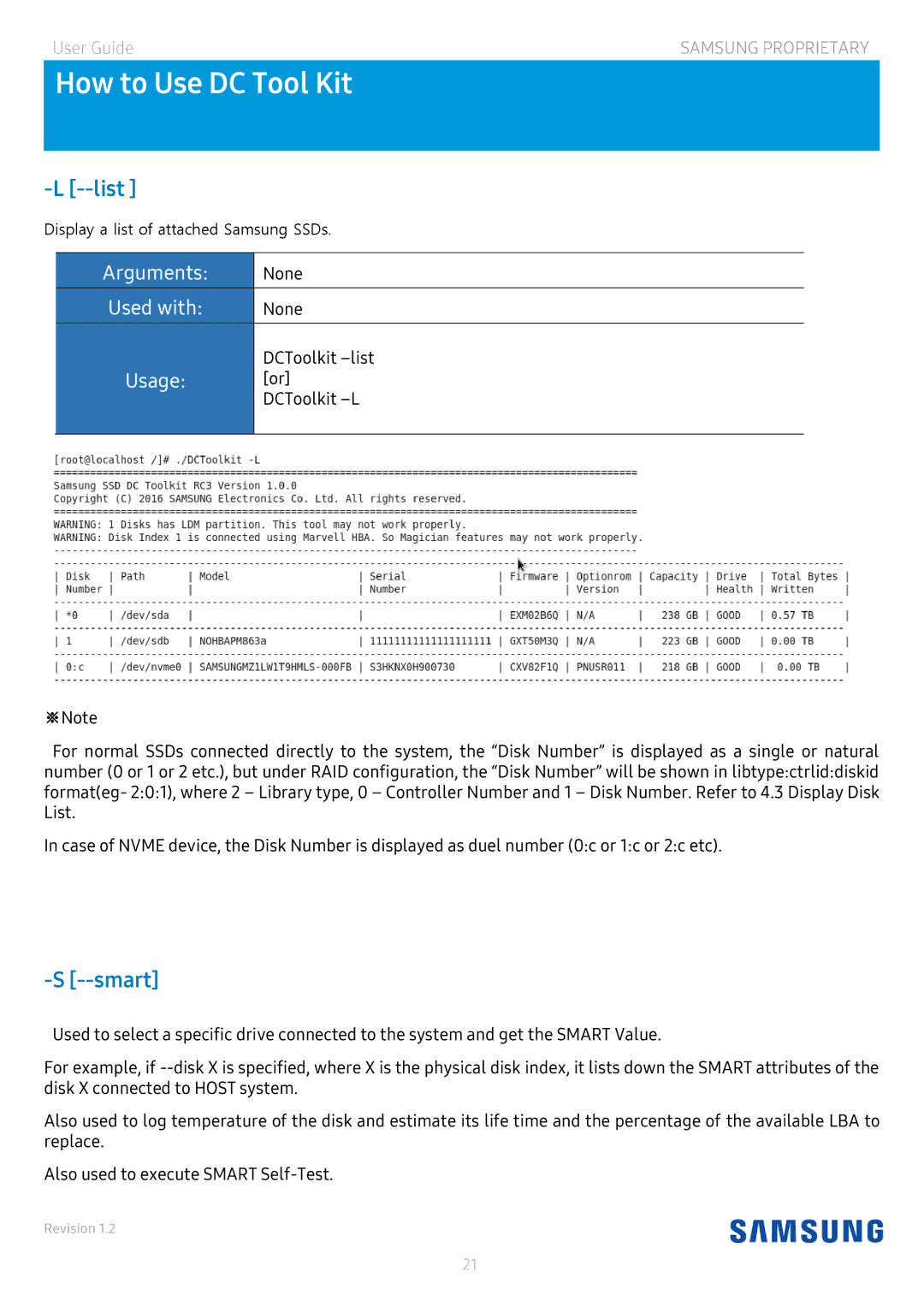MZ-7LM480NE, MZ-7LM1T9NE, MZ-7LM960NE specifications
Samsung has long been a leader in the solid-state drive (SSD) market, and their lineup of SSDs, including the MZ-7LM960NE, MZ-7LM1T9NE, and MZ-7LM480NE, exemplifies innovation, performance, and reliability. These SSDs belong to the Samsung 850 EVO series, well-regarded for their advanced features and technologies aimed at enhancing user experience.One of the standout characteristics of the MZ-7LM960NE, MZ-7LM1T9NE, and MZ-7LM480NE is their use of Samsung's 3D V-NAND technology. This groundbreaking technology stacks memory cells vertically rather than spreading them out on a flat plane. By optimizing the physical structure of the flash memory, 3D V-NAND significantly boosts performance while improving endurance and efficiency. As a result, users can experience faster read and write speeds, leading to quicker boot times and enhanced application responsiveness.
In terms of capacity, the SSDs offer generous options. The MZ-7LM960NE provides a substantial 960GB, making it an excellent choice for users seeking ample storage for large files, applications, and games. The MZ-7LM1T9NE doubles that capacity, with a remarkable 1TB of storage, while the MZ-7LM480NE rounds out the range with 480GB. These diverse storage capacities cater to a variety of needs, from casual users to professionals requiring extensive data storage.
Another crucial feature of these SSDs is their low power consumption. The Samsung 850 EVO series SSDs are designed to operate with a minimal amount of power, which not only helps prolong battery life in laptops but also contributes to a reduction in heat generation. This is especially important for mobile devices where thermal management is critical.
Performance benchmarks for these SSDs are impressive, offering sequential read speeds of up to 540 MB/s and sequential write speeds of up to 520 MB/s. Random read and write speeds also shine, with performance metrics of up to 98,000 IOPS for random reads and 90,000 IOPS for random writes. Such high-performance capabilities make them suitable for a wide range of applications, from basic computing tasks to intensive gaming and content creation.
In conclusion, the Samsung MZ-7LM960NE, MZ-7LM1T9NE, and MZ-7LM480NE SSDs stand out in the competitive SSD market through their advanced 3D V-NAND technology, impressive performance metrics, and efficient power consumption. With various capacities to choose from, these drives are a reliable solution for anyone looking to enhance their computing experience.

